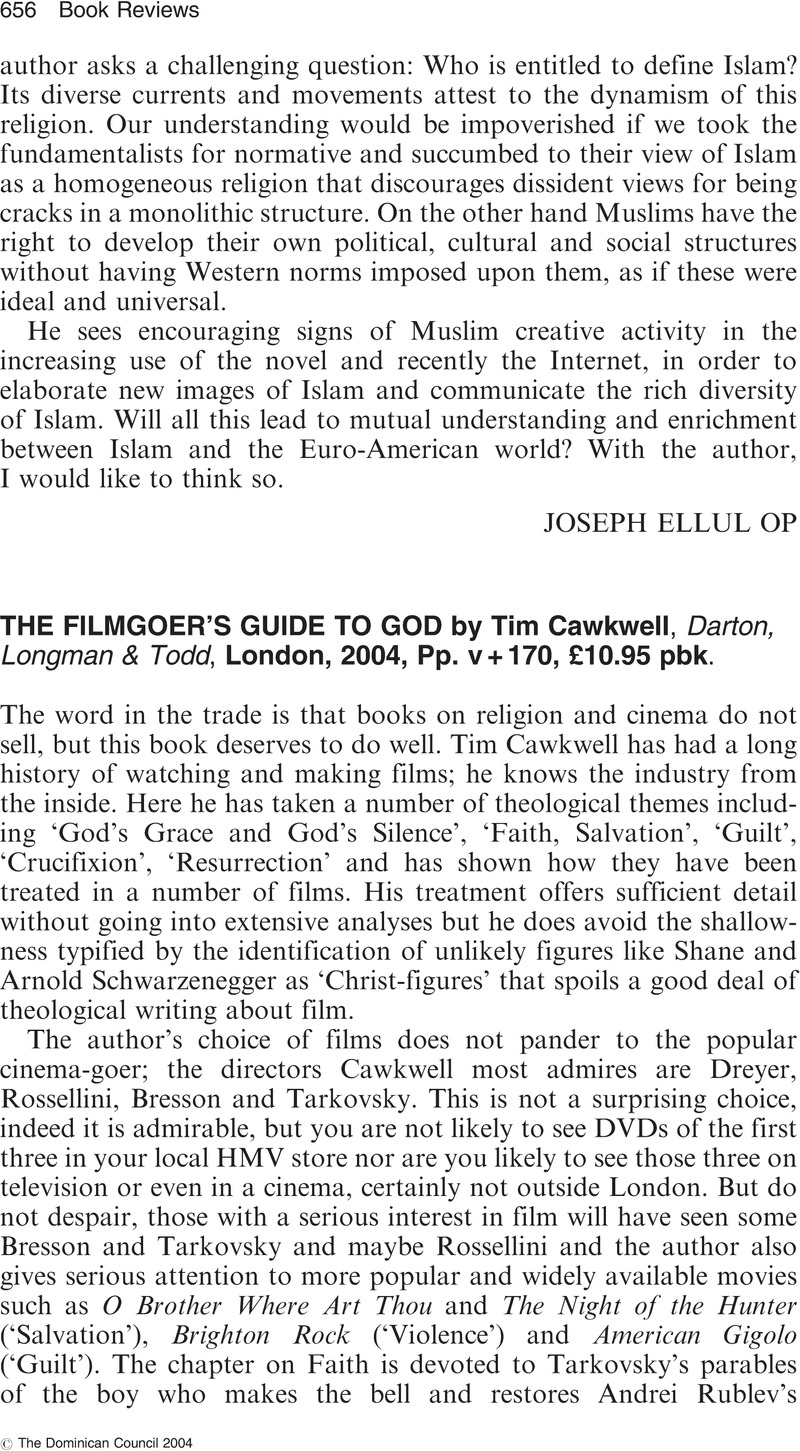No CrossRef data available.
Article contents
The Filmgoer's Guide to God by Tim Cawkwell, Darton, Longman & Todd, London, 2004, Pp. v + 170, £10.95 pbk.
Review products
The Filmgoer's Guide to God by Tim Cawkwell, Darton, Longman & Todd, London, 2004, Pp. v + 170, £10.95 pbk.
Published online by Cambridge University Press: 01 January 2024
Abstract
An abstract is not available for this content so a preview has been provided. Please use the Get access link above for information on how to access this content.

- Type
- Book Reviews
- Information
- Copyright
- Copyright © The Dominican Council/Blackwell Publishing Ltd 2004


